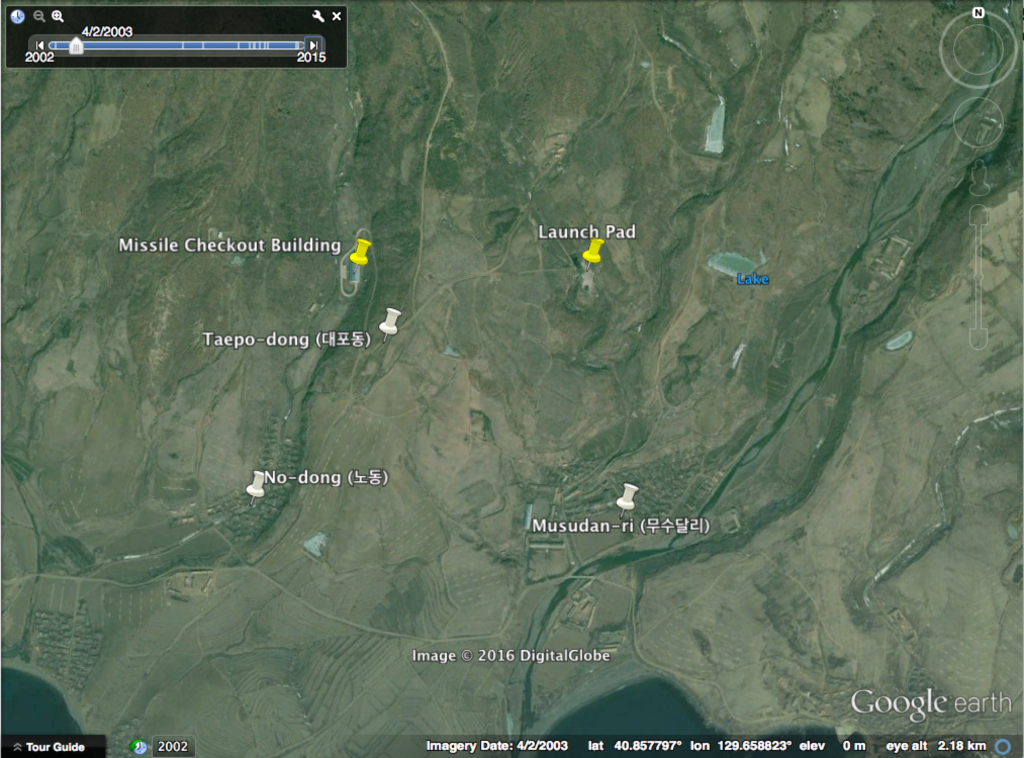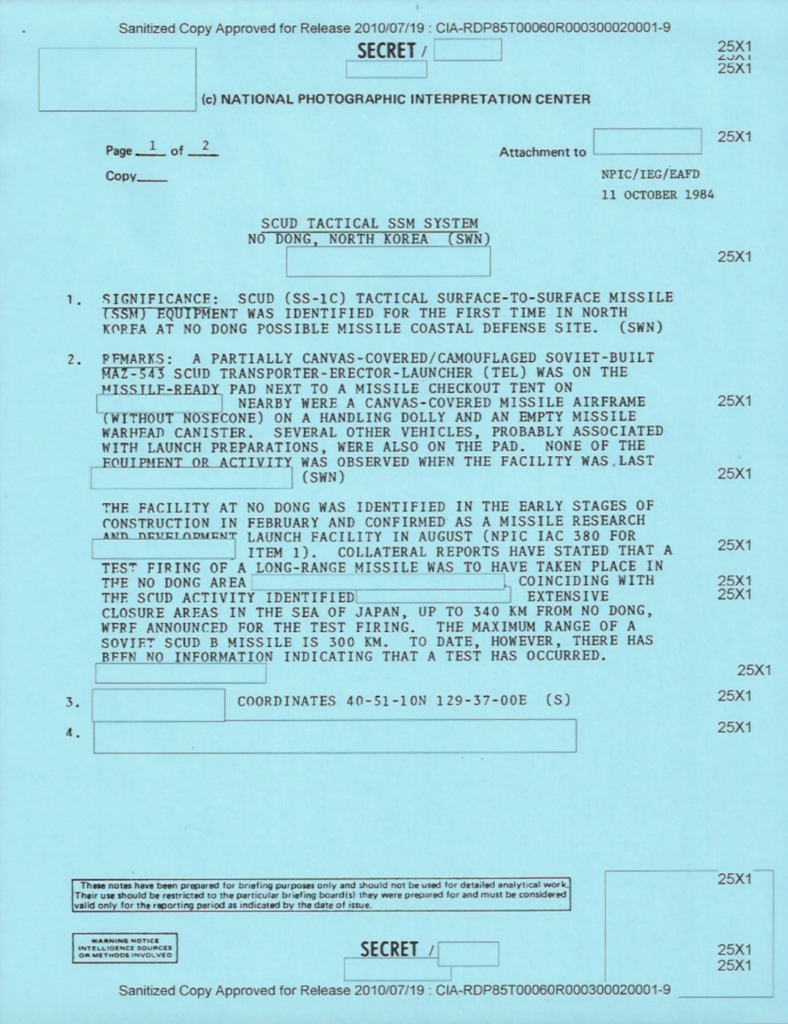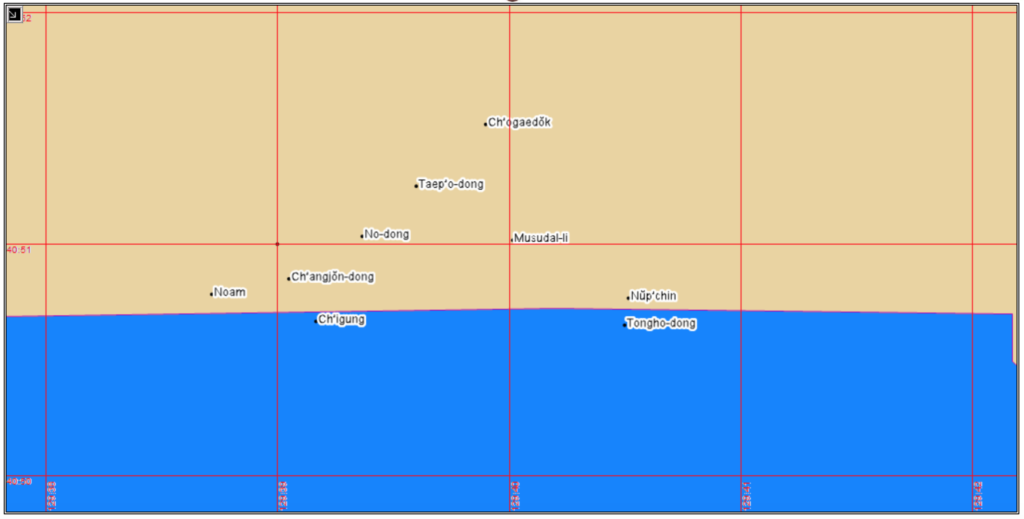North Korea tested three Nodong ballistic missiles, which means I am going to be treated to three days of the same penis joke on Twitter. No. Dong. I get it.
The thing is, “Nodong” is our name for their missile.
That’s right kids, we call it the Nodong. They don’t. So, they aren’t idiots. And there is no reason to use the preferred North Korean romanization of “Rodong.” We write the place-name Nodong with an N, and named the missile after it.
What follows is a short guide to how the US names North Korean missiles, with a table at the the end.
The first thing is to understand the problem of naming missiles. When the Soviets started testing missiles, they used R- (for rocket), as well as lots of other numbers and designations. But being Stalinist dictatorship, they didn’t tell the CIA the names of all their new missiles. (How rude!) NATO established a parallel system of naming and numbering the missiles it saw. For example, the USSR developed a series tactical ballistic missiles. NATO saw these and called them the SS-1 Scud. SS stands for surface-to-surface missile, 1 tells you they saw it first, and Scud is just a catchy name that starts with S. (Bombers get names that start with B like “Badger” and fighter aircraft get names that start with “F” like … oh, see page 6.) Variants of a missile type also get letters, so the R-17 Elbrus is the SS-1c Scud-B. Of course, this hints at more complications. Notice that The SS-1c is the Scud B. C and B? Yep, the SS-1b is the Scud A. So, that basically screws up the rest of the series. And just to make things really interesting, sometimes Moscow would decide a missile was new enough to get a new designation but we wouldn’t. So for example, the Soviets have two missiles — the R-11 and R-17 — that we called the Scud-A and the Scud-B.
The US did the same thing with the Chinese, using CSS- numbers (Chinese surface-to-surface), while Beijing used Dong Feng (“East Wind”). The US intelligence community adopted a practice of naming missiles after locations where they were first seen or tested, at least temporarily. So, for example, the US called the DF-4 missile the “Chingyu” missile after it was first seen near the test site at Jingyu. (Also our name for the test site, after the nearest populated place; China calls it something entirely different.) The name was eventually replaced by the NATO designation CSS-3. Oh, and since we never saw the DF-1, our numbers are off of theirs by one. (Our CSS-1 is their DF-2, and so on.)
NOW TO NORTH KOREA.
First, the North Koreans call their missiles “Hwaseong” (화성) or Mars, aka ♂. Very martial, very manly. Pretty much the opposite of No Dong. (Ok, in Asian languages “Mars” is “Fire Star”, rather than a Roman God, but the general astrology is pretty similar.) Maybe someone thought it was cute to pick an emasculating name in response, just as the MiG-15 became the “Fagot.”
The missiles you might know — Nodong, Taepodong and Musudan — are all named after locations near North Korea’s original missile-test site on its east coast. Here is a map I made.

Just like the “Chingyu,” these missiles are all named after the first place they were seen. Turns out it is the same place, more or less. I actually got pretty obsessed about this question and tracked down, with the assistance of my friend Adam Rawnsley, what I think is the first intelligence report spotting missiles at the site that would give its name to the Nodong missile: SCUD TACTICAL SSM SYSTEM NO DONG, NORTH KOREA. In this case, No is the name, Dong denotes a village.

Note that the coordinates in this document are “off” by about 3 km — I think that is a function of my being too lazy to convert the older coordinate system. No matter, you can see the three places that gave us the names Nodong, Taepodong and Musudan in this little map from the NGA Geonames databse.

This is why there is no reason to transliterate it as “Rodong,” which is how the North Koreans like it — for example, Rodong Sinmun. It’s our name, not North Korea’s.
Sometimes the US does weird things naming the missiles. North Korea has a short-range ballistic missile that the United States sometimes calls the “Toksa.” That’s our name, I am told. I sometimes see people say it means “Viper” (독사) in Korean, but I think it is sort of a joke — it seems like the closest Korean analogue to the Russian name of the missile it resembles, the “Tochka.”
Lately, the US seems to have adopted a system of KN- numbers, which often crop up in the South Korean media. The “Toksa,” for example, is the KN-02. This system seems to have replaced the older naming strategy, which was probably running out of names of different farming villages around the test site. (I am bummed we don’t get a “Nupchin” missile.) For comparison, these days the US seems to name new Chinese missiles or boosters SC- after Shuangchengzi (the laowai name for the Jiuquan Space Launch Center) or WU- after Wuzhai (a/k/a the Taiyuan Space Launch Center). The KN- numbering scheme seems to treat all of “Korea, North” as a single location.
But this naming system also seems to susceptible to confusion at times. The US seems to use KN-11, for example, for both liquid and solid-fueled SLBMs tested by the North Koreans. To be charitable, we should remember that the North Koreans are trying to be confusing. Internal designations used to keep programs straight aren’t intended to leak. If we fault the US for anything, it should be for not settling on a consistent public nomenclature.
As if all this weren’t confusing enough, one encounters yet more names — often from marketing of the missile abroad. The North Koreans actually market their missiles as “Scud” missiles. It’s a brand name, thanks to the Soviets or maybe Saddam. Andrea Berger recently explained, in her account of the Mick Ranger trial, that North Korean brokers often entice buyers by using NATO names for their own equivalents of Soviet military equipment, and only later ask if they are interested in a less expensive version produced by North Korea. So, North Korea seems to market the Nodong as the Scud-E. Similarly, when North Korea sold a variant of Musudan missiles to the Iran, press reports called the missile the “BM-25.” You can probably guess that someone got ahold of some marketing materials, because it would seem that this is also a sales name — a ballistic missile (BM) that can travel 2,500 km (25). The Chinese actually did something similar with one of their missiles. The DF-15, which we call the CSS-6 Mod 1, was exported as the M-9 or the SST-600. M is for missile, and I am pretty sure that SST means “surface-to-surface tactical” missile. 600 is the range in km. In Pakistan, this missile is the Hatf-IV or Shaheen 1.
All of this is surprisingly useful. You can infer a fair amount about US expectations and the state of knowledge in Washington and Seoul from just the nomenclature itself. The fact that the US ran out of farming villages around No Dong implies the scale of the North Korean missile program would have surprised a lot of people in the 1980s. And the use of the KN-11 for both the liquid- and solid-fueled SLBM programs suggests that perhaps the solid-fueled SLBM program has caught the US unaware.
But don’t let this spoil your fun. Go ahead an make your little penis joke. Just keep in mind that you are no great wit. It has been the same joke since about 1984.
| US NAME | KN | DPRK | SERIAL | FUEL | STAGES | CLASS | RANGE (km) |
PAYLOAD (kg) |
|---|---|---|---|---|---|---|---|---|
| Scud B/C/ER | 화성5/6 | 100 | Kerosene/RFNA | 1 | SRBM | 1,000 | 500 | |
| Nodong | 화성7 | 300 | Kerosene/RFNA | 1 | MRBM | 1,200 | 500 | |
| Taepodong 1 | Kerosene/RFNA | 2 | IRBM | 2.500 | 750 | |||
| 백두산 | 3 | ICBM | 5,500 | 250 | ||||
| Taepodong 2 | Kerosene/RFNA | 2 | ICBM | 10,000 | 500 | |||
| 은하/광명성 | 3 | 15,000 | ||||||
| Musudan | KN-07 | 화성10 | 700 | UDMH/NTO | 1 | IRBM | 4,000 | 500 |
| KN-08 | 화성13 | 900 | UDMH/NTO | 2 | ICBM | |||
| KN-14 | 화성14 | 1000 | Unknown | 2 | ICBM | |||
| Toksa | KN-02 | 800 | Solid | 1 | SRBM | 120 | 500 | |
| KN-10 | Solid | SAM | ||||||
| KN-11 | Solid | 2 | SLBM |

US DOD monitors the DPRK launches and has massive amount of secret radar data to determine trajectory and acceleration. In March 2014, a South Korean military source claimed that the KN-02’s range had been extended to 170 km (110 mi) through improved engine performance . Apparently engine performance of DPRK as measured by acceleration is closely measured by US DOD .Presumably actual radar data of US DOD is classified . The US DOD will not provide DPRK missile trajectory and acceleration data to the public although it must possess it . However ,some launch video of KN-11 is public. Can the video be used to estimate change in altitude over time and acceleration data? Perhaps KCNA can hold the video camera still at the next DPRK missile launch and keep the camera from launch point a kilometer at ground level . It might make getting the initial estimate of acceleration much easier for the general public. It would be nice if KCNA would publish at least some acceleration data since the US DOD already has it but does not release it. Acceleration data and trajectory is so much more helpful for the public monitoring progress. Is there a reason why DPRK has not released trajectory and acceleration data when the US DOD already knows it?
“Is there a reason why DPRK has not released trajectory and acceleration data when the US DOD already knows it?”
The reason is clear. The propaganda threat value is highest when the information can be exaggerated.
Unless the true information indicates a weapon that can deliver a nuclear warhead on the imagined enemies of the DPRK, it is better to be mysterious and imply that the ability to deliver the warhead is “just around the corner” or better “exists today”.
A nuclear weapons system is most valuable if it is seen as a credible threat, or an emerging credible threat in the near future. By maintaining inflated performance and roadmap projections, the DPRK regime has more leverage against its adversaries and more ability to keep total Stalinist control over its internal population.
In the US military/intelligence community, the assignment of weapons and space systems designators is done by a subcommittee of the, you’d never guess it, Weapon and Space Systems Intelligence Committee (WSSIC, pronounced Wiss-sick). Nominations for designations can, of course, come from WSSIC member agencies. Steven Zaloga has a little on this, https://tinyurl.com/hpmn3xh .
In looking for references, I came across the following description of WSSIC which, since it’s in a job announcement and those tend to be transient, I’m going to copy here in the interests of preservation.
https://clearedjobs.net/job/sr-science-amp-amp-tech-intel-analyst-vienna-virginia-351849
[excerpts]
The Weapon and Space Systems Intelligence Committee (WSSIC) provides the national level Intelligence Community (IC) forum for technical analysis and reporting on the capabilities of foreign weapon and space systems. It operates under the auspices of the National Intelligence Council (NIC) within the Office of the Director of National Intelligence. The WSSIC responds to requests for intelligence products from senior policy and decision makers across the US government. It facilitates collaboration on intelligence across the IC and with US allied nations.
[snip]
[Duties]
[snip]
– Provide staff support to Subcommittees to edit and disseminate memos assigning designators and names for foreign weapon and space systems
It would be nice if we got something in the standard names that gave more information, like propellant type or range, like we do with NATO plane designations. (ie. prop planes one syllable, jets two.)
As for the jokes, Ike did warn us about the military industrial oedipal complex.
For what it is worth, the North Koreans romanize 화성 as “Hwasong” (“Hwaseong” is how the South Koreans do it). Also, the county and town of Hwasong has been renamed Myonggan (명간). Finally, Nodong and Taepodong only appear on Gazateer (our) maps of North Korea. As far as they are concerned, all of those areas are part of Musudan-ri.
For what it is worth, two posts on the recent state of diplomatic play on the peninsula in the context of the missile tests:
https://piie.com/blogs/north-korea-witness-transformation/slave-blog-august-catch-edition-i
https://piie.com/blogs/north-korea-witness-transformation/slave-blog-august-catch-edition-ii
Steph Haggard
Jeff:
A (strongly) suggested post: what can shoot which of these out of the sky? The “no good military options” mantra is well-known. But one set of actions carries less risk than direct pre-emptive strikes and would have the dual benefit of signaling resolve and capabilities at the same time: to track and destroy missiles that are being tested, most notably those that are flying into international waters or even the EEZs of Japan.
If not this, then what?
SH